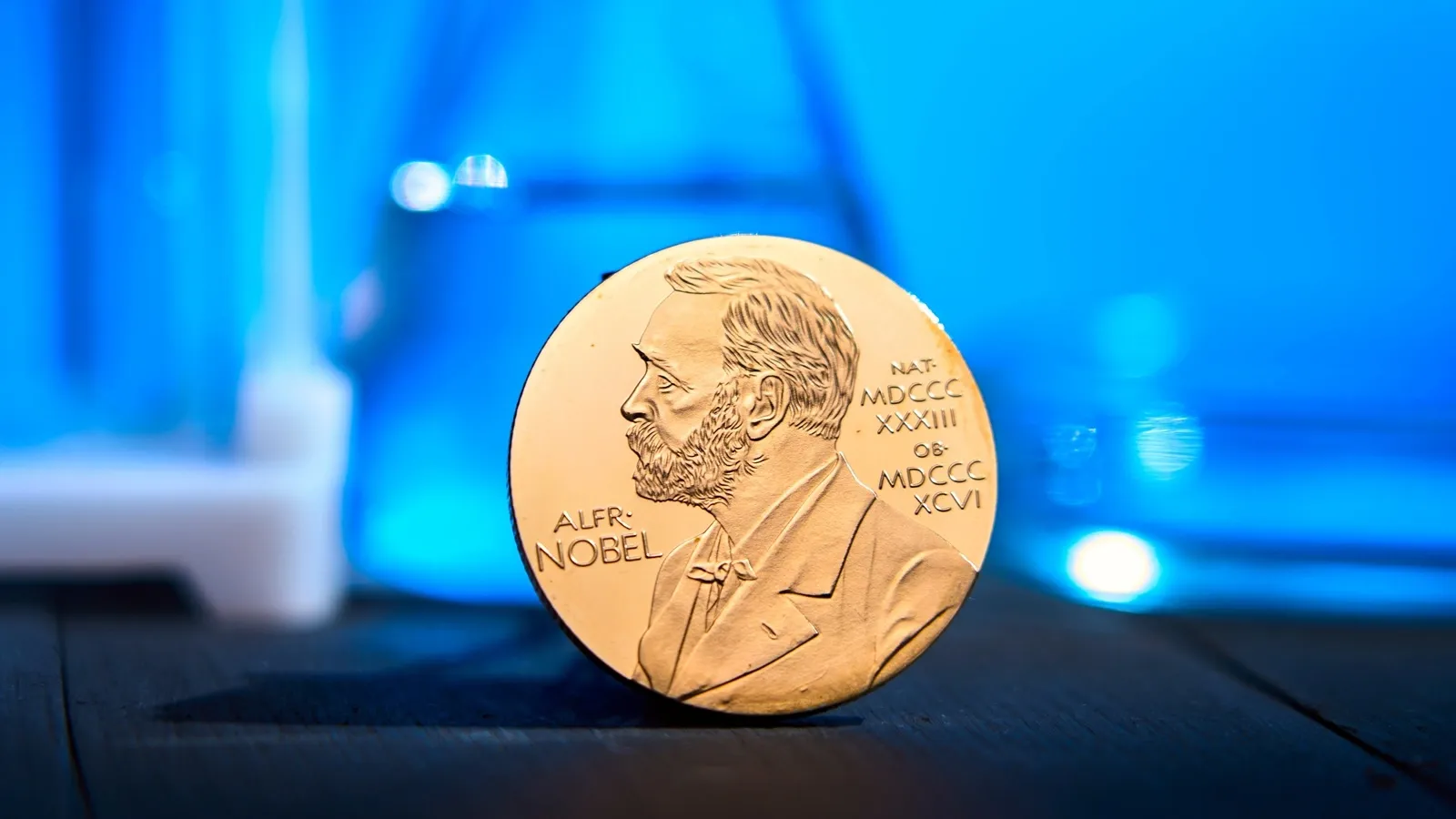Trending
Nobel Prize in Chemistry 2025: Susumu Kitagawa, Richard Robson and Omar Yaghi awarded for development of metal–organic frameworks
.png)
3 min read | Updated on October 08, 2025, 15:41 IST
SUMMARY
The 2025 Nobel Prize in Chemistry has been awarded to Susumu Kitagawa (Japan), Richard Robson (Australia), and Omar M. Yaghi (United States) for pioneering the creation of metal-organic frameworks (MOFs).

Japan’s Susumu Kitagawa, Australia’s Richard Robson and the United States’ Omar M. Yaghi were on Wednesday awarded the 2025 Nobel Prize in Chemistry for pioneering the development of metal-organic frameworks (MOFs).
The laureates’ molecular constructions, described as “rooms for chemistry,” are crystalline structures made from metal ions connected by long carbon-based molecules, forming vast internal cavities. These crystalline materials, known as MOFs, contain vast networks of pores through which gases and other molecules can flow freely.
Researchers have since used MOFs to capture carbon dioxide, harvest water from desert air, store hydrogen, remove PFAS and other pollutants from water, and even slow fruit ripening by trapping ethylene gas.
“Metal-organic frameworks have enormous potential, bringing previously unforeseen opportunities for custom-made materials with new functions,” said Heiner Linke, chair of the Nobel Committee for Chemistry.
The story of the discovery began in the 1970s, when Richard Robson was teaching chemistry at the University of Melbourne. While preparing molecular models for his students using wooden balls and rods, he realised that the placement of each “bond” contained critical structural information.
The insight led him to wonder: could real atoms be guided to self-assemble into larger, stable architectures?
In 1989, Robson turned that thought into reality. By combining copper ions with four-armed organic molecules, he built an open crystal structure, which the Academy described as a “diamond filled with innumerable cavities.”
Although fragile, his work proved that chemists could construct molecular frameworks with designed spaces inside.
During the 1990s, Susumu Kitagawa, guided by his belief in the ‘usefulness of the useless’, took Robson’s idea further. In 1997, his team succeeded in creating a stable, three-dimensional MOF that could absorb and release gases like methane and oxygen without collapsing.
Kitagawa later demonstrated that MOFs could also be flexible, expanding and contracting as they interact with molecules.
Meanwhile in the United States, Omar Yaghi, inspired since childhood by images of molecular structures, set out to design materials as predictably as building with LEGO. In 1995, while at Arizona State University, he coined the term metal-organic framework and demonstrated its remarkable stability. His 1999 breakthrough, MOF-5, revealed that just a few grams of the material contained an internal surface area equivalent to a football field.
Yaghi later showed that MOFs could be rationally engineered for specific purposes, a modular approach that has since allowed chemists to create tens of thousands of unique frameworks. His group even demonstrated that certain MOFs could pull water from desert air overnight, releasing it when heated by the morning sun.
Today, metal-organic frameworks are used in laboratories and industries worldwide. Electronics makers use MOFs to capture toxic gases in semiconductor manufacturing. Other frameworks can break down harmful substances, including chemical weapon precursors, or separate greenhouse gases from industrial emissions.
Some scientists believe MOFs could become “the material of the twenty-first century”, with uses in clean energy, medicine, and environmental protection.
By signing up you agree to Upstox’s Terms & Conditions
About The Author
Next Story

